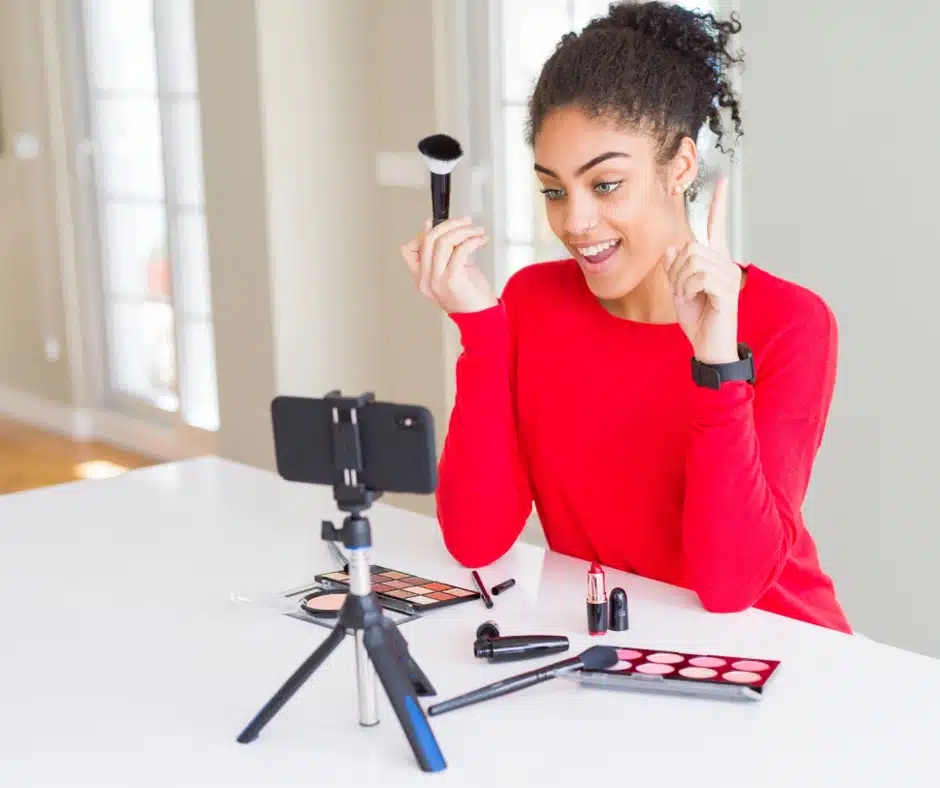The Rise of Social Media Influencers: A Game-Changer in Modern Marketing
In recent years, brand influencers have become a powerful force in the social media landscape. With platforms like Instagram, TikTok, YouTube, X (formerly Twitter), and Facebook leading the charge, influencers have redefined how brands connect with their audiences. Interestingly, anyone can now become an influencer, provided they post frequently, interact with their followers, and establish a strong online presence. Everyday people living ordinary lives can turn into internet sensations overnight, capturing the attention and admiration of thousands, if not millions. Followers often look to these influencers for makeup tips, product recommendations, dance trends, and even advice on places or foods to avoid.
While influencers bring numerous positives, such as offering authenticity and creative storytelling, they also face challenges. The larger their audience, the more scrutiny they endure. From having their past unearthed to facing backlash over controversial opinions, influencers must tread carefully to safeguard their reputations. Oversharing or missteps online can lead to losing followers and, in extreme cases, being “cancelled.” To maintain their brand, influencers must strike a balance between openness and discretion, ensuring that their content remains authentic without jeopardizing their credibility.

Understanding Influencers and Their Role
Social media influencers are individuals who command a loyal following due to their expertise, credibility, or engaging personalities within specific niches like fashion, fitness, beauty, gaming, cooking, or travel. These influencers possess key characteristics that make them indispensable to modern marketing:
- Authority or Expertise: They are recognized as knowledgeable voices in their niche.
- Engaged Following: Their audiences genuinely value their opinions and recommendations.
- Consistent Content Creation: Influencers regularly produce engaging content that resonates with their audience.
- Trust and Credibility: Followers trust their opinions, which significantly impacts purchasing behaviour.
Beyond creating content, influencers collaborate with brands to promote products and services. Whether through product recommendations, branded giveaways, or advocacy, they act as ambassadors who champion the brand’s mission and values. They also use call-to-actions (CTAs) to drive audience engagement, from website visits to product purchases, making them vital assets for businesses seeking visibility and trust.
Types of Influencers: Breaking Down the Categories
To choose the right influencer, brands must understand the different categories based on follower count, niche, and level of influence:
Mega-Influencers (1M+ followers):
Mega influencers are individuals with a massive audience base of at least one million followers across their social networks. These influencers often include celebrities such as actors, musicians, athletes, and reality television stars who initially gained their fame offline. However, a growing number of mega influencers have achieved their status through online platforms, becoming digital celebrities in their own right.
Mihlali Ndamase @mihlalii_n
Amanda du-Pont @amandadupont
Advantages of Working with Mega Influencers
Strong Media Presence:
Mega influencers are often household names, which lends credibility and prestige to the brands they endorse. Collaborations with them can significantly enhance brand perception.
Challenges of Working with Mega Influencers
High Costs:
Mega influencers typically charge a premium for endorsements, making them a less viable option for small or medium-sized businesses. Their fees can range from tens of thousands to millions of dollar per post, depending on the platform and campaign scope.
Macro-Influencers (100k–1M followers):
Macro influencers are social media personalities with follower counts ranging from 100,000 to 1 million. These individuals often occupy a middle ground between mega influencers and micro influencers, offering a substantial reach while being more accessible and relatable. They generally fall into two categories:
Up-and-Coming Celebrities: B-grade celebrities or individuals gaining fame in their respective fields.
Successful Online Personalities: Content creators who have built a dedicated following through consistent and impactful work in specific niches.
Sandile Mahlangu @sandilem_
Crystal Zinzile Mhlanga @crystalzii
Advantages of Working with Macro Influencers
Niche Expertise:
Many macro influencers are highly respected in their niche, combining significant reach with expertise that resonates with their followers.
Challenges of Working with Macro Influencers
Lower Engagement Rates:
As follower count increases, engagement rates typically decrease. Macro influencers may not have the same deep connection with their audience as micro or nano influencers.
Micro-Influencers (10k–100k followers):
Micro influencers are social media personalities with a smaller, more engaged following. Unlike mega and macro influencers, they are not celebrities but rather everyday individuals or emerging influencers who have carved a niche for themselves in specific areas of interest. Their content resonates deeply with their audience, leading to higher levels of trust and engagement.
Key Characteristics of Micro Influencers
Specialized Niche Expertise: Micro influencers focus on a particular niche—be it fitness, beauty, travel, gaming, or parenting—making them relatable experts in their domain.
Relatability: They often maintain personal connections with their audience, making them appear authentic and trustworthy.
Cameron Hanekom @cameronhanekom_
Nokuthula Thuli Sindane @thuli_sindane
Advantages of Working with Micro Influencers
Authenticity:
Micro influencers tend to share honest and relatable content, which resonates deeply with their audience. This authenticity helps build trust in the brand they endorse.
Challenges of Working with Micro Influencers
Limited Reach:
While micro influencers have highly engaged followers, their smaller audience size means their campaigns may lack the broad reach provided by macro or mega influencers.
Nano-Influencers (<10k followers):
Nano influencers represent the newest and smallest tier of influencer marketing but are rapidly gaining recognition for their unique strengths. With follower counts between 1,000 and 10,000, they may seem modest in reach compared to mega, macro, or even micro influencers. However, their impact often lies in their niche expertise and strong connections with their audience.
These influencers are often considered “big fish in a small pond” because they dominate specialized areas of interest, making them highly valuable for brands operating in niche markets.
Advantages of Working with Nano Influencers
Targeted Marketing:
They offer hyper-focused access to niche audiences. For brands catering to specialized markets, nano influencers provide a direct link to potential customers who are genuinely interested in their product or service.
Challenges of Working with Nano Influencers
Scaling Issues:
To achieve broad visibility, brands may need to collaborate with multiple nano influencers, which can complicate coordination and campaign management.
Why Brands Value Influencers
Brands have increasingly recognized the immense power that influencers wield in today’s market. A single post from an influencer has the potential to significantly boost sales or, conversely, damage a brand’s reputation if the message fails to resonate with the audience. For this reason, marketers are increasingly leveraging influencers as a cost-effective and time-saving strategy to promote their products. Influencers not only showcase products but also drive direct traffic to websites and physical stores, facilitating conversions.
However, this approach comes with risks. If customers perceive the influencer’s message as insincere or manipulative, it can backfire, leading to distrust and negative feedback. Therefore, brands must exercise caution when selecting influencers for campaigns. A mismatch between an influencer’s niche and the product being promoted—such as a makeup influencer endorsing building materials—can lead to ineffective messaging and a loss of credibility. Choosing influencers who genuinely understand and align with the product ensures that their audience, which already trusts their advice, is more likely to engage positively.
The Importance of Influencers
Influencers bring more than just follower counts; they deliver authenticity and relatability to campaigns. Engagement rates—a key measure of an influencer’s effectiveness—highlight their impact. In South Africa, the average engagement rate is 3.39%, more than double the global benchmark of 1.49%. Nano influencers, with 5,000 to 10,000 followers, excel with an impressive engagement rate of 4.55%, demonstrating that smaller, more focused audiences often foster deeper connections. Interestingly, only 23% of influencers with under 500,000 followers are managed by agencies, highlighting their accessibility for brands.
Successful influencer campaigns emphasize creative freedom and authenticity. Influencers prefer partnerships that allow them to maintain their unique voice, and subtle integration of products within content tends to yield the best results. This approach resonates with audiences who are increasingly fatigued by overt advertising, reinforcing the value of influencers in fostering genuine connections with consumers.
Current Trends in South African Influencer Marketing
Influencer marketing in South Africa is experiencing significant growth, with the market projected to expand by 10.29% between 2024 and 2029, reaching an estimated value of US$44.28 million by 2029.
A notable trend is the increasing collaboration between brands and micro-influencers—those with follower counts between 10,000 and 100,000. These influencers often achieve higher engagement rates, making them attractive partners for brands aiming to connect authentically with niche audiences.
Additionally, South African brands are repurposing influencer-generated content across multiple social media platforms to maximize reach and return on investment. This strategy allows brands to maintain a consistent message while engaging diverse audiences across various channels.
The emphasis on authenticity and community engagement is also shaping the influencer marketing landscape. Brands are seeking influencers who align with their values and can foster genuine connections with their audiences, enhancing trust and credibility.
Furthermore, the rise of nano-influencers—those with fewer than 10,000 followers—is gaining attention. These influencers, often experts in specific or niche fields, can offer highly targeted and engaged audiences, providing value for brands with specialized products or services.
Overall, the South African influencer marketing sector is evolving towards more authentic, community-focused, and diversified strategies, with brands leveraging a range of influencer tiers to effectively reach and engage their target audiences.
How to Choose the Right Influencer for Your Brand
Selecting the right influencer involves a mix of research, strategy, and careful evaluation. Here’s a step-by-step guide:
- Define Your Campaign Objectives
What do you want to achieve with influencer marketing? Common goals include:
- Boosting brand awareness.
- Driving sales.
- Increasing website traffic.
- Improving social media engagement.
Clear objectives will help you measure the success of the campaign and determine the type of influencer you need.
- Understand Your Target Audience
Your target audience should overlap with the influencer’s followers. Analyse audience demographics such as age, location, interests, and behaviours.
- Research Influencers Thoroughly
Use influencer marketing platforms or manual searches to identify potential candidates. Look for influencers who have:
- A strong presence in your niche.
- An engaged and loyal following.
- A consistent posting schedule.
- Evaluate Engagement and Authenticity
Engagement rate is more important than follower count. Look for influencers whose followers actively like, comment, and share their content.
- Check for fake followers or bots using tools like Social Blade.
- Analyse their tone and style to ensure alignment with your brand.
- Review past Collaborations
Examine the influencer’s track record with other brands. Were the campaigns successful? Did the collaborations feel authentic or forced?
- Prioritize Alignment over Popularity
An influencer’s values, ethics, and personal brand should align with your own. A mismatch can lead to ineffective campaigns or reputational damage.
- Test the Waters
Start with a small-scale campaign to assess the influencer’s effectiveness before committing to a long-term partnership.
The Cost of Influencing in South Africa
A single Instagram post in South Africa can cost anywhere from R2, 693 for a nano influencer to over R17, 667 for a celebrity account with millions of followers. These rates, detailed in the newly released 2024 South African Influencer Benchmark Report, shed light on the value influencers bring to brands eager to connect authentically with their audiences.
The report which interviewed 560 influencers said the average cost per post across all influencer tiers is R4,354 for static content and R7,335 for reels, making this form of advertising comparable to traditional out-of-home placements but with an added layer of trust. “Influencers act as a unique bridge between brands and consumers, offering impressions that often rival those of traditional media,” the report notes.
Non-monetary compensation
75% of influencers are open to non-monetary compensation, such as high-value products or experiences. Companies can offer influencers a variety of non-monetary compensation, including:
Free products
The most common type of non-monetary compensation, where the brand provides the influencer with a free product to promote. This could be a physical product, a digital product, a service, or an experience.
VIP access
For example, a music festival might give an influencer a free VIP ticket to promote their experience at the event.
Influencers can also make money through other means, including:
- Affiliate marketing: A brand pays an influencer a commission for sales made through a unique referral link.
- Sponsored content: The influencer promotes a brand’s product or service in exchange for payment.
- Merchandise sales: The influencer creates and sells personalized merchandise.
- Events: The influencer participates in an event for a brand.
- Consulting services: The influencer provides consulting services for a brand.
Conclusion
Influencer marketing is reshaping how brands connect with audiences. By carefully selecting the right influencer and leveraging their authenticity and reach, brands can drive sales, boost visibility, and build trust. Take the time to find your perfect match, and watch your brand thrive in the ever-evolving social media landscape.
Written by
Makhauta Tsemane


